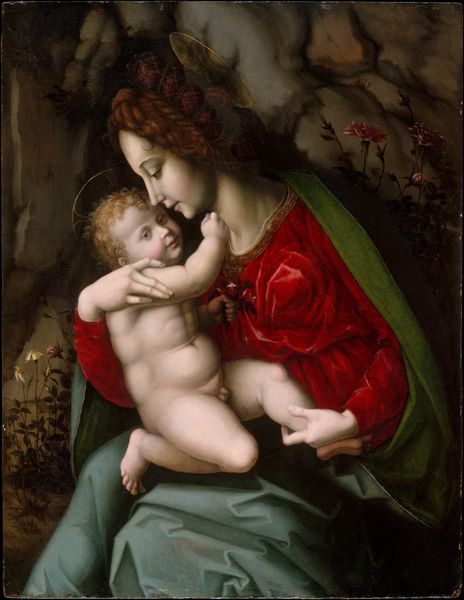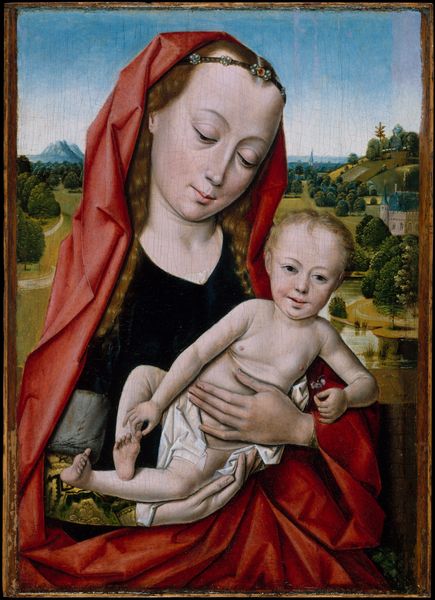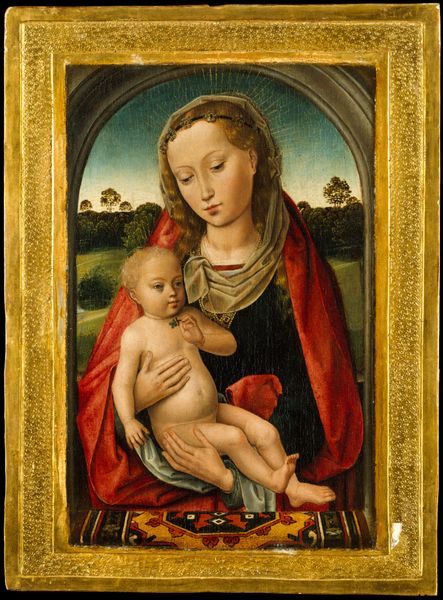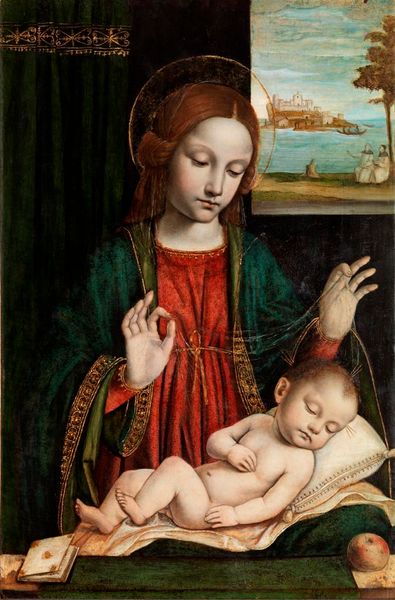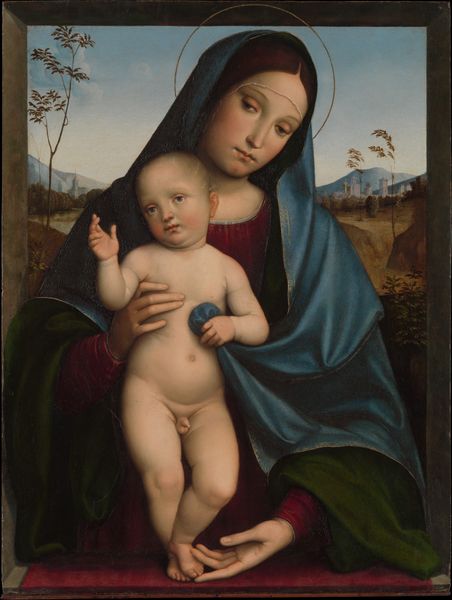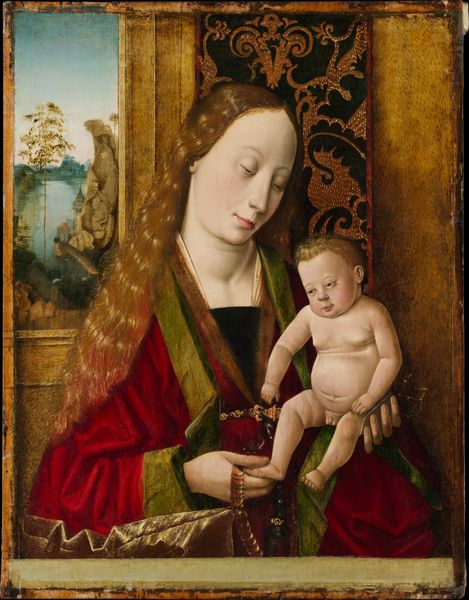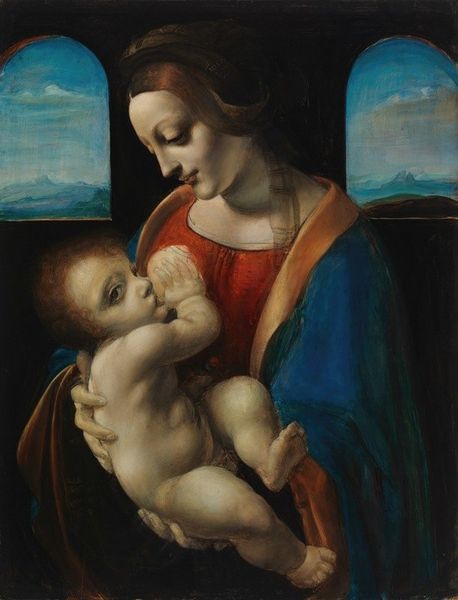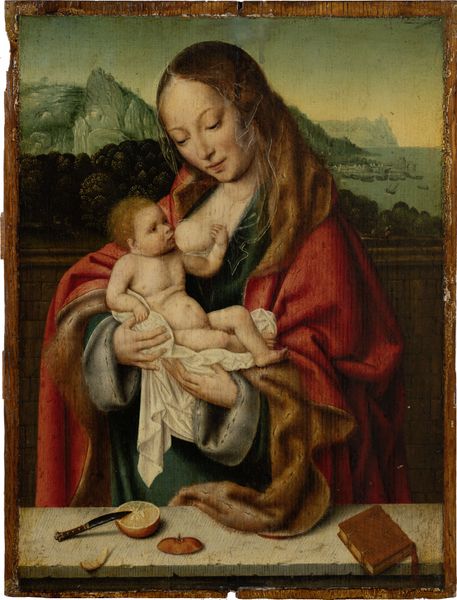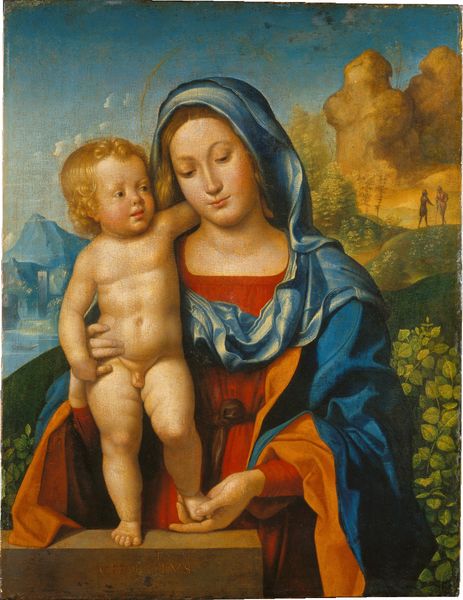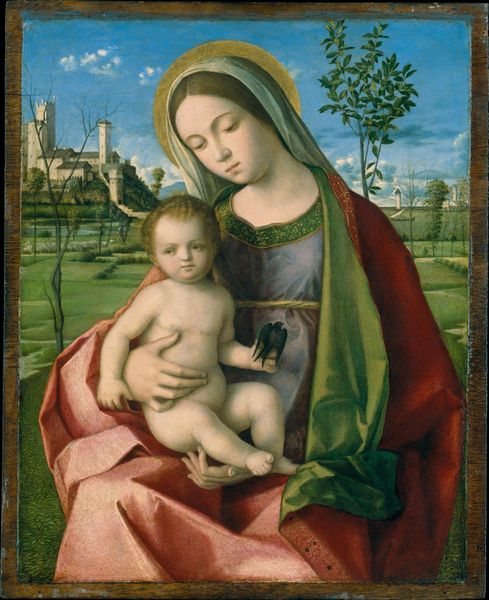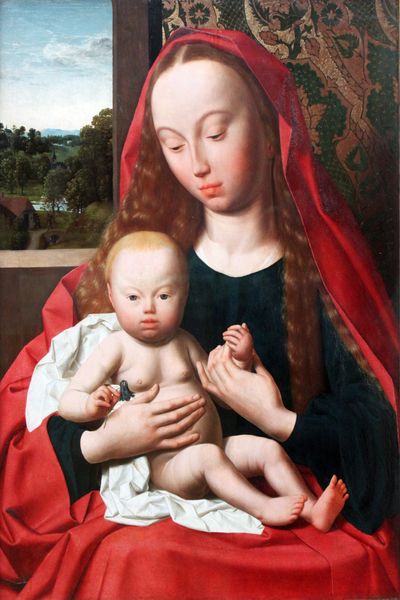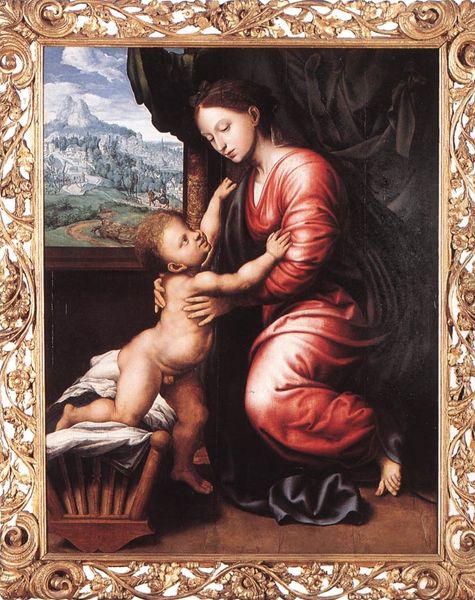
painting, oil-paint
#
portrait
#
high-renaissance
#
painting
#
oil-paint
#
figuration
#
madonna
#
child
#
history-painting
#
italian-renaissance
Dimensions: Overall, with additions, 15 7/8 x 12 in. (40.3 x 30.5 cm); painted surface 15 5/8 x 11 5/8 in. (39.7 x 29.5 cm)
Copyright: Public Domain
Curator: Standing before us is Bernardino dei Conti's "Madonna and Child," an oil painting believed to have been created between 1516 and 1522, currently residing here at the Metropolitan Museum of Art. Editor: The first thing that strikes me is its tender intimacy—it feels like stumbling upon a private moment. The Madonna’s gaze is so soft, almost melancholic. Curator: It's interesting that you pick up on that melancholy. I feel that too, though it’s tempered by an almost unsettling serenity. Let’s talk a bit about how this image, depicting Mary breastfeeding the Christ child, diverges and nods to High Renaissance ideals and some material underpinnings that create it. I think here of the common material value of such painting in early 16th-century Italian society as the very material bond with Mary herself as something to hold dear as social glue. Editor: Yes, and focusing on that human connection brings a compelling layer. I can see how such images had almost an economic function to cement communal relations in devotion to a symbol. Curator: Absolutely. The choice of oil paint here too would certainly enhance that lifelike feeling. Considering the techniques Bernardino dei Conti would have used: layers of glazes perhaps, lending the piece depth and luminosity...it must have taken countless hours to complete such refined work. I imagine him grinding pigments in the studio—turning the raw materials into something imbued with reverence. It must be challenging. Editor: Knowing that helps bring those silent, unseen hours of labour into the visual picture. Each delicate brushstroke tells us about the culture that saw divinity in motherhood and demanded skill and craft in honoring this figure. So much in this painting that feels traditional in style. Still I cannot help that sense of quiet emotion captured in that delicate line that forms Mary's neck and how the little boy clings for survival. Curator: I think, perhaps, this particular painting leaves us with an undeniable reflection on human existence in which devotional symbols can have unexpected impact on both artist and viewer—it also is interesting to ponder the complex intersection of craft, and belief during a moment in the Renaissance where belief itself and forms were rapidly changing due to all kinds of circumstances. Editor: You’ve reminded me that it’s easy to overlook what a material presence the creation of any form is; that its physicality influences its reception as well, especially when so tied with powerful emotions, or personal beliefs! It leaves one musing on all which is lost within an artwork through its time to today!
Comments
No comments
Be the first to comment and join the conversation on the ultimate creative platform.
